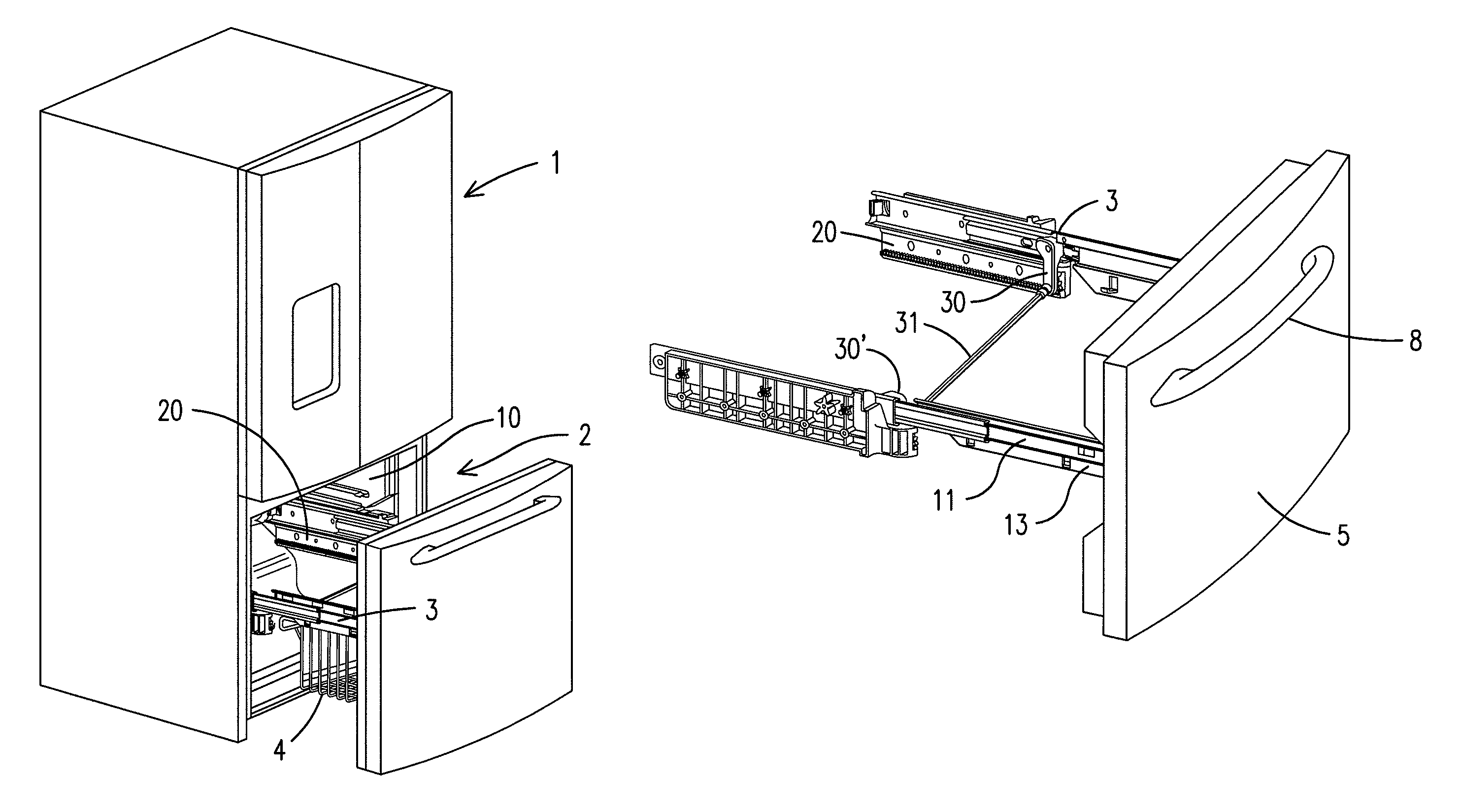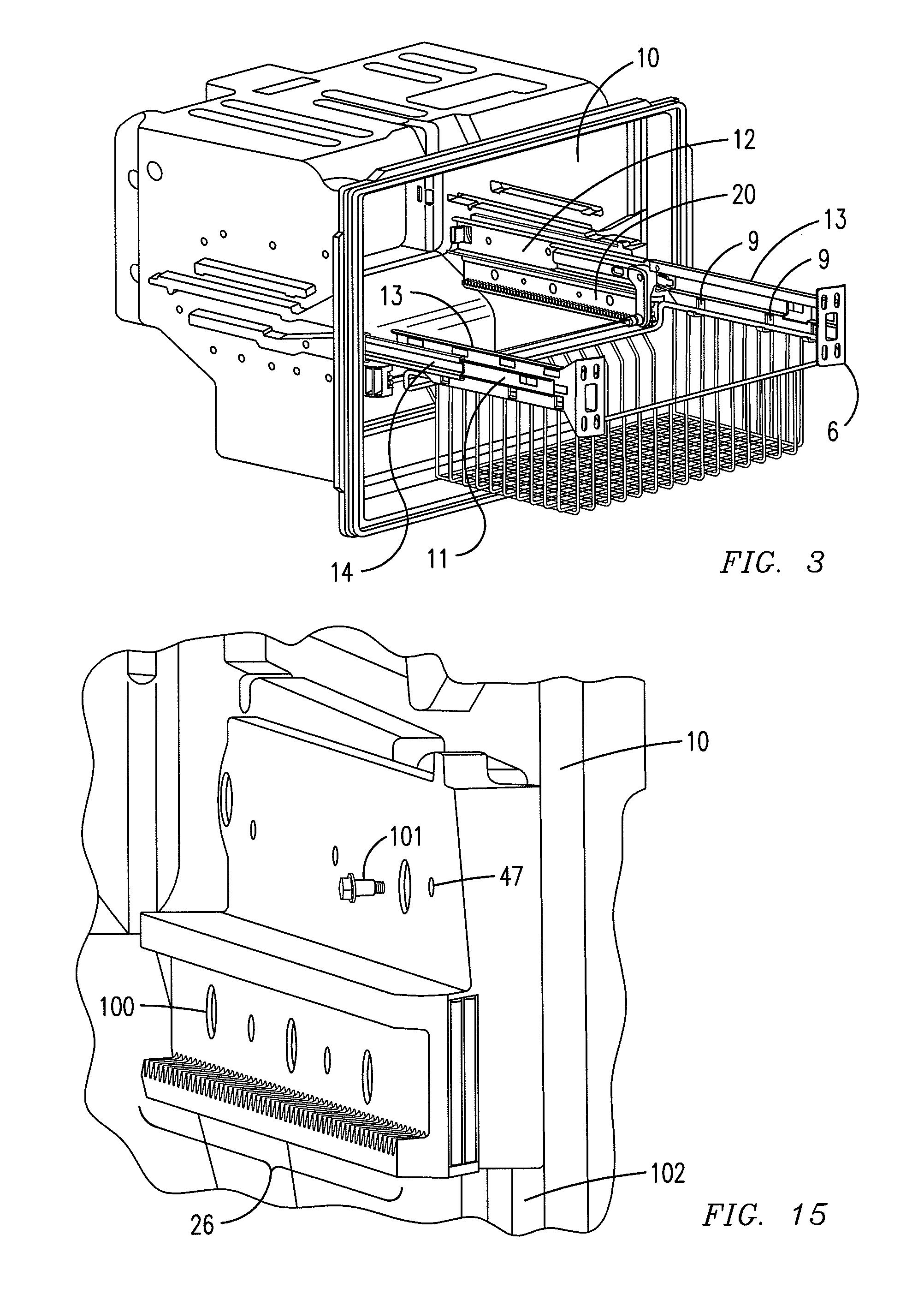Support beam for a cabinet drawer
a support beam and drawer technology, applied in the field of sets of support beams, can solve the problems of loose rails within the canal, affecting the weight distribution of drawers, and tending to gain weigh
- Summary
- Abstract
- Description
- Claims
- Application Information
AI Technical Summary
Benefits of technology
Problems solved by technology
Method used
Image
Examples
third embodiment
[0083]FIGS. 16 and 17, show a back and front view, respectively, of the third embodiment mentioned for FIG. 14. Specifically, the support beam (20) is shown with a lateral front wall (48) that has a greater width than the support beam (20) width. As mentioned before, this front lateral wall (48) that is generally perpendicular to the rest of the support beam (20), has a curvature similar to the curvatures (102) (illustrated in FIG. 18) usually used in home appliances walls (10). Therefore, the front lateral wall (48) and the curvature (102), define the deepness, to quickly assembly and couple the drawer mechanism of the present invention with the home appliance wall (10). Clearly, if it is not a home appliance, the front lateral wall (48) may be eliminated from the drawer mechanism.
[0084]Specifically, making reference to the back view of FIG. 16, locaters are shown (29). Preferably, more than one locater (29) in each one of the drawer mechanisms may be found. The locaters (29) allow...
first embodiment
[0094]In a first embodiment with lug (49), the wall (10) has a groove, in which the lug (49) will be inserted. It is necessary to point out that it is not intended that the lug (49) should hold weight or distribute drawer (4) weight over the wall (10) groove. It is possible that the upper part (21) lateral wall (27) fastening means (101) have a length greater than the lug (49) to fasten to the wall (10) groove.
second embodiment
[0095]In a second embodiment without groove (49), as shown in FIG. 20, the drawer mechanism is adaptable to any type of wall (10), independent of whether it has grooves or not. Therefore, in this embodiment, the fastening means (101) in the upper part (21) lateral wall (27) are capable of being inserted in the wall (10). Likewise, the fastening means (101) in the lower part (22) lateral wall (24) are also capable of being inserted in the wall (10). As stated before, it is possible that the locaters (29) rest on the wall, and consequently, also help distribute the drawer (4) weight.
[0096]The fastening means (101), be them of the lower part (22) lateral wall (24) and / or the upper part (21) lateral wall (27), possibly in combination with locaters (29), should make a contrary force (F3) to the basket weight force (F1) and the work (W) done by the rail (3) and basket (4), specifically the basket (4) and its content, be it when the basket (4) is introduced in the drawer or even more so, w...
PUM
 Login to View More
Login to View More Abstract
Description
Claims
Application Information
 Login to View More
Login to View More - R&D
- Intellectual Property
- Life Sciences
- Materials
- Tech Scout
- Unparalleled Data Quality
- Higher Quality Content
- 60% Fewer Hallucinations
Browse by: Latest US Patents, China's latest patents, Technical Efficacy Thesaurus, Application Domain, Technology Topic, Popular Technical Reports.
© 2025 PatSnap. All rights reserved.Legal|Privacy policy|Modern Slavery Act Transparency Statement|Sitemap|About US| Contact US: help@patsnap.com



